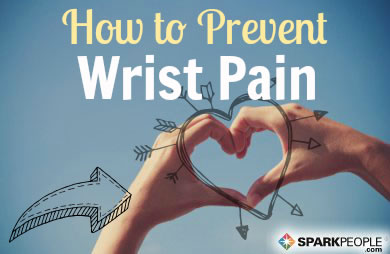**All of the following exercise recommendations assume that your blood pressure is under control (whether through medication or diet) and is monitored by a doctor.
Aerobic Exercise Recommendations
- If you are new to exercise or haven’t been active in a while, start slowly and increase the time and intensity of your workout as you get stronger. A good starting point is 30 minutes of cardiovascular activity, three days per week. Examples include walking,
swimming and biking. - If 30 minutes is too much, start with 10 to 20 minutes and increase from there. Eventually, the goal is to work up to 45 to 60 minutes, five days per week.
- It is important to warm up before and cool down after each exercise session (five to 10 minutes each).
- The best activities to do are the ones you enjoy and will stick with.
Notes on Strength Training
Many people with hypertension avoid strength training because they are afraid that it will increase their blood pressure. But research shows that these fears are generally unfounded.
It’s true that if you have high blood pressure, you should avoid strenuous strength-related activities, such as trying to open a sticking window or attempting to move a stalled car. Activities of this type, including isometric strength training, may cause excessively high blood pressure responses and are potentially dangerous for many people with hypertension. Other than that, you are encouraged to follow a sensible strength training routine.
Sensible strength training is characterized by:
- Lifting lighter weights for a higher number of reps. A good weight is one that you can lift for 12 to 15 repetitions in good form.
- Moving continuously throughout each exercise to avoid an isometric hold.
- Breathing throughout each exercise, which typically means exhaling as you exert effort or lift the weight, and inhaling as you return to the starting position.
- Not lifting maximum weights, performing isometric contractions or holding your breath. These practices result in excessive blood pressure responses and should be avoided.
Other Exercise Considerations
Some medications (such as beta blockers) lower both your resting heart rate and your heart rate when working out. Therefore, when exercising, your heart rate will not reflect how hard you are actually working. For individuals taking beta blockers or similar medications, it is not recommended that you measure your exercise intensity using a heart rate method, such as pulse counting or wearing a heart rate monitor.
Instead, use other measures of exercise intensity, such as the Rate of Perceived Exertion (RPE) and/or the Talk Test. Aim to work at an intensity that allows you to breathe comfortably and rhythmically throughout all phases of your workout. This will ensure a safe and comfortable level of exercise.
Exercise is a great way to help lower your blood pressure in combination with a healthy diet and your doctor's treatment program. Remember to always consult your doctor before starting an exercise program and to listen to your body—especially when starting out.













